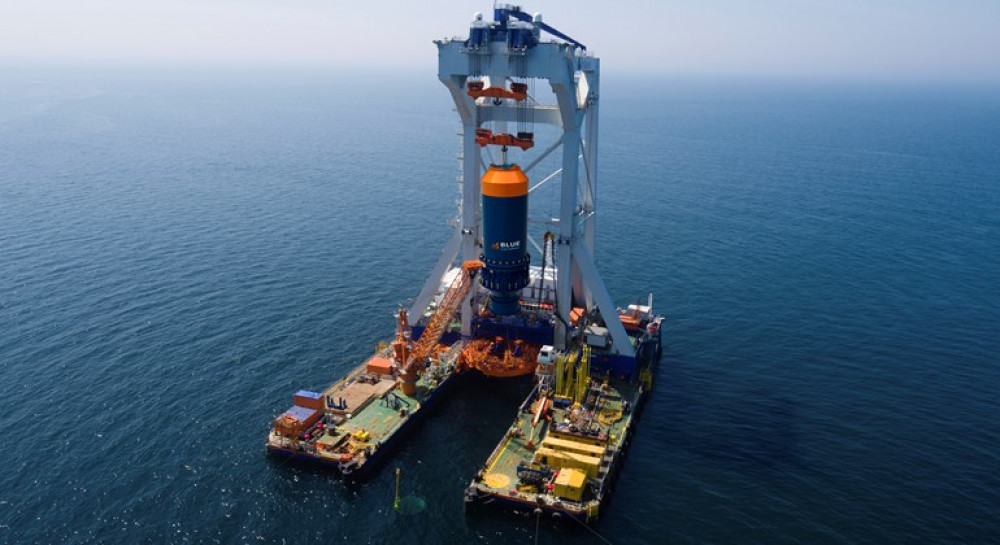
Fixed Foundation Designs
There are different fixed foundation designs in use for offshore wind, with the main ones being monopiles, jackets, and gravity-based designs. New fixed foundation variants are being developed to meet new industry demands and different site needs around the world.
Monopiles
The vast majority of offshore wind farms built to date have used steel monopile foundations (i.e. 82% of European offshore turbines at end 2018, according to WindEurope). These are pile driven into the seabed, and have a transition piece and a tower on top. Monopiles have traditionally been viewed as the most cost effective option for turbines up to the 5 MW sited in sandy-clayey ground and located in relatively shallow water depths of 25-30 m. However, as turbine size has increased well beyond 5 MW and projects move to deeper water depths, monopile foundation design has kept pace, moving into the XL and XXL category. Potential issues to consider relate to transportation of the much heavier and larger XL and XXL monopiles to site, installation techniques (i.e. problems in pile driving larger diameter monopiles), and the actual "stiffness" of an installed monopile and its ability to cope under the environmental conditions once the turbine is installed and operating.Jacket
These lattice style foundations typically consist of 3-4 legs anchored to the seabed with piles, a transition piece, and tower. Jackets can also come as 6-leg designs. Jacket foundations have increased in use as projects moved to water depths greater than 30 m. They are suitable for a range of different non-rocky soil conditions. New designs continue to evolve, for example twisted, mono bucket, or suction-bucket jackets. These may have the potential to reduce fabrication costs (and increase fabrication efficiency) whilst also eliminating the need for pile driving and simplifying/speeding up installation and thereby potentially saving additional costs.Gravity-based
Traditionally made from concrete, but also available in steel, gravity-based foundations have a wide base to ensure stability. They are most suitable when turbines need to be well clear of waves (e.g. 30 m above seal level). Gravity-based foundations can be floated/towed to site, but they require significant seabed preparation prior to installation.
Floating Foundations
The rise of floating foundation technology is often hailed as a "game-changer" for offshore wind, even though the technology is still in relative infancy and fairly costly when compared to traditional fixed-foundation designs. There are three main concepts for floating foundations:
Spar-buoy;
Semi-submersible; and
Tension leg platform.
Variants on these also exist.
These floating foundations are designed for water depths where fixed-foundations are not feasible - generally depths greater than 50 m, although they can be used in depths of 30-50 m. The development of floating foundation concepts makes offshore wind a potential reality for countries such as Japan and the US. Other potential benefits relate to them being easier (and cheaper) to install, with less environmental impact on the seabed.
